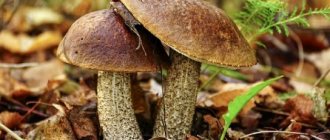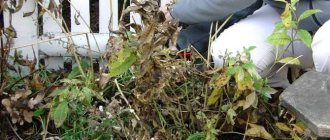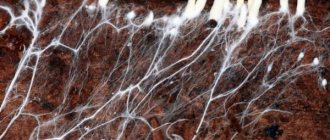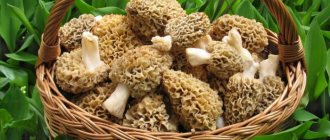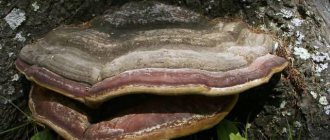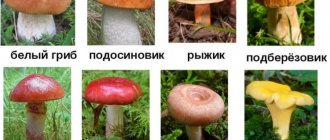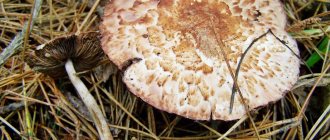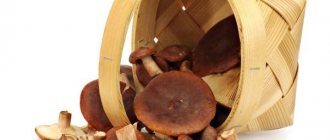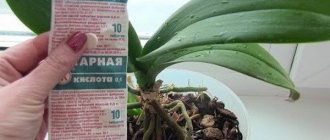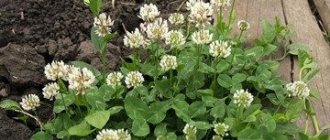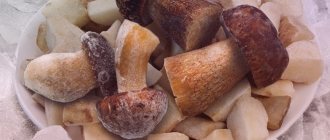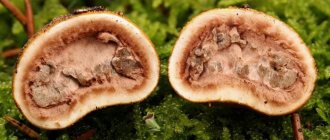Kingdom Mushrooms: general characteristics
To begin with, you should generally remember who mushrooms are and what they are?
In biology there is a special section, a separate discipline, the purpose of which is to study these organisms. It's called mycology. According to the latest data, over one hundred thousand different species of fungi, both unicellular and multicellular, are known today. The figure is considerable, especially since this kingdom of living nature is intensively developing and progressing numerically. Parasitic and saprophytic forms reach particular diversity.
Mushrooms occupy a special position in the system of the organic world due to the presence of a number of characteristic features in their structure and way of life. Therefore, they are all united into a separate kingdom.
Existing types of mycorrhiza
Depending on the principle of distribution of hyphae on the root system of the plant, mycorrhiza can be of three types:
- Endotrophic, in which hyphae penetrate directly into plant cells. Endomycorrhiza is formed in the root system of the symbiont and additionally nourishes the plant with useful substances.
- Ectotrophic, in which the mycelial hyphae entwine the roots of the plant without penetrating their structure. Ecto-mycorrhiza is less effective for crops, since it provides more benefits to the mycelium, feeding it with sugars released into the soil. During their life, fungi release into the soil a special type of protein - glamolin, which promotes the growth of the plant's root system.
- Mixed (ectoendotrophic). Absorbent fibers create a kind of cover around the roots and partially penetrate the cells of the root system of the symbiont plant.
According to scientists, in nature, more than 90% of all plants have mycorrhizae. Most cultivated, fruit and ornamental plants are infected with endo-mycorrhiza, which provides significant benefits in the development of agricultural crops. External mycorrhiza of the fungus is characteristic of most conifers and is found on the root system of trees growing in park areas and forests.
Distinctive features of mushrooms
What are these features? It's all about the similarity of representatives with both plants and animals. For a long time, this puzzled scientists. After all, creatures turn out to be unique and incomprehensible, since they combine the characteristics of completely opposite organisms.
Thus, the common features that unite mushrooms with plants include:
- the ability to synthesize phytohormones and vitamins inside the body;
- unlimited apical growth throughout life;
- attached lifestyle (lack of ability to move);
- the presence of a strong cell wall;
- nutrition by absorption of substances.
However, there are signs that make the organisms in question similar to animals:
- heterotrophic method of nutrition (that is, the consumption of ready-made organic compounds, the impossibility of their independent synthesis inside the body);
- the presence in the cell wall of the complex carbohydrate chitin, which makes up the integument of crustaceans, insects and other animals.
The combination of such features allows us to consider mushrooms as unique creatures worthy of uniting into a separate kingdom of living nature.
Functions of mycorrhiza for growing plants
The main functions of mycorrhiza became the impetus for its use in the household:
- The ability to isolate protein as an important natural catalyst;
- Digestion and breakdown of nutrients from plant remains;
- Absorption of easily soluble mineralized elements from humus;
- Supplying the host with vitamins, minerals, hormones and enzymes.
As a result of the mutual growth of trees together with mushrooms, their joint active existence occurs. Each of the representatives receives its share of protection and “immunity” from external factors. So, for the fungus there is a zone for parasitism, for the tree there is additional protection in case of insufficient moisture or depleted soil, as well as diseases.
General plan of the structure of the mushroom
The main feature in the structure of the organisms under consideration is the hyphae, which form the mycelium and, in higher basidiomycetes, fruiting bodies. They are thin threads, white or translucent, which consist of cells separated by septa. The hyphae branch strongly, intertwine, grow together and form a large underground network - a mycelium. On the outside, they form the fruiting body of higher mushrooms - the stem and cap.
In all other representatives, hyphae serve only to form the mycelium. The latter is needed for the absorption of nutrients, vegetative reproduction, spore formation and the sexual process.
It is the mycelium of the fungus that takes part in the formation of the fungal root. Therefore, what mycorrhiza is becomes clear if you know what the organism itself is represented by. This is a combination of the underground part of mushrooms with the roots of higher plants. A kind of mutually beneficial cooperation that helps both creatures survive.
Thus, the hyphae of the fungus form mycelium, it intertwines with the roots and mycorrhiza, or fungal root, is formed. This is the main feature in the structure and way of life of a significant part of the representatives of the kingdom in question.
The benefits of mycorrhiza
The gradual overpopulation of the planet entails an inevitable shortage of resources and livelihoods. A few decades ago, all technologies in agriculture were aimed at increasing the efficiency of fertilizers, using various chemicals to stimulate crop growth, and using artificially bred highly productive varieties. According to scientists, the effectiveness of these technologies has now reached its limit. That is why today mycorrhiza is a real solution to increase crop yields using the natural capabilities of the ecosystem.
So, non-pathogenic soil fungi form mycorrhiza with plant roots. Regardless of the type, this phenomenon has a tangible benefit on crops, acting on them as a natural growth stimulator and a powerful immunomodulator. Already today, some companies are actively using artificial infection of agricultural crops with fungi, significantly increasing yields without the use of expensive mineral fertilizers and chemically active drugs. This method has shown high efficiency when growing plants on soils poor in nutrients and moisture.
As an intermediate conclusion, let’s try to list the main advantages of mycorrhiza:
- a significant increase in the absorption capacity of plants;
- moisture accumulation;
- supplying the plant with nutrients;
- increasing crop resistance to fungal infections;
- increasing the rate of growth, development and productivity;
- improvement of soil structure;
- reducing soil acidity.
In addition to the above advantages, plants infected with mycorrhiza have increased resistance to some pathogenic microorganisms, increased immunity, and improved fruit quality.
What is mycorrhiza?
Mycorrhiza , (from Greek mykos (μύκης) - mushroom and rhiza (ρίζα) - root) is the phenomenon of mutually beneficial coexistence between living plant cells and non-pathogenic (non-disease-causing) fungi that colonize the soil. The definition of mycorrhiza literally means “ fungus root ”.
Mycorrhiza is a partnership between plants and fungi , leading to mutual benefit. Fungi use the products of plant photosynthesis to produce plant sugars that they cannot produce themselves. Plants, in turn, receive much more benefits thanks to mycorrhiza.
Mycelial hyphae penetrate into the cells of the root cortex ( Endomycorrhiza ) or remain on the surface of the root, entwining it with a dense network ( Ectomycorrhiza ), thereby increasing the ability to absorb moisture and mineral salts from the soil. Plants begin to grow stronger and produce more flowers and fruits. They also become much more resistant to unfavorable conditions - drought, frost, inappropriate pH or excessive salinity of the soil. Mycorrhiza protects plants from diseases (Fusarium, Late blight).
Mycorrhiza in simple terms
Being elements of one ecosystem, all life processes of microscopic soil fungi and plants are closely related to each other.
Wikipedia accurately defines what mycorrhiza is in biology. In a simpler and more understandable language, this phenomenon can be described as follows. During the process of photosynthesis, the plant produces plant sugars, which are partially released into the soil. Glucose attracts microscopic mycorrhiza-forming fungi, as it is a nutrient medium for them. By settling on the root system of plants, soil fungi supply plants with nutrients obtained from different layers of soil.
The benefits of such a symbiotic association are obvious:
- Mushrooms receive constant nutrition in the form of plant sugars.
- Plants' ability to obtain moisture and mineral elements from the soil significantly increases, which makes them stronger and more resistant to adverse factors and fungal diseases.
Mycorrhizae of the fungus are hyphae - the thinnest absorbent threads that are capable of extracting the most valuable nutrients, moisture, micro- and macroelements from the ground. The mycelium hyphae, spreading over a large area, play the role of a kind of “natural pump” that pumps nutrients and moisture out of the soil. In return, the mushrooms receive regular nutrition in the form of plant sugars.
Structure and characteristics of mycorrhiza
Fungal mycorrhiza is a symbiotic combination of fungal hyphae with plant roots. This is not part of the mushroom, it is its way of existence, the way it interacts with the plant. It is divided into the following types depending on the mode of action and lifestyle:
- Ectotrophic.
- Endotrophic.
- Ericoid.
- Phycomycete.
- Ectoendotrophic.
Ectotrophic mycorrhiza envelops the root system and penetrates only the surface layers of thin young tree roots, penetrating into the intercellular space, but without destroying the cells themselves. With this type, hyphae envelop the root like a sheath that completely covers the surface of the root branches. Fungi with this type of mycorrhiza include the following classes:
- Hymenomycetes (most of the mushrooms known to everyone belong to this class - boletus, boletus, boletus, etc.);
- gasteromycetes (puffballs, vesels and other species whose spores mature inside the body of the fungus).
Often such fungi form mycorrhiza with many types of trees, but there is also an option when a certain fungal organism corresponds only to a special tree with which it can coexist - for example, boletus or aspen boletus are named so because they are found only under these trees. However, it also happens that one tree is adjacent to different types of mushrooms at the same time.
The endotrophic type is characterized by penetration into the internal tissues of the plant, while there are practically no hyphae on the surface. The mycelium penetrates the cells of the root epidermis and penetrates into the intercellular space, being mostly based in the middle layers of the parenchyma. In cells, hyphae have clusters in the form of glomeruli. Most often, endotrophic mycorrhiza is formed in lingonberry, heather, etc. plants.
Phycomycete mycorrhiza penetrates the roots right through. It is more common than others on many types of herbaceous plants, shrubs and trees. Fungi that create this type of connection are called phycomycetes, but sometimes phycomycete mycorrhiza are formed by basidiomycetes and imperfect fungi. Numerous hyphae penetrate the cells and intercellular spaces of the deep layers of the parenchyma.
With the ericoid type of mycorrhiza formation, glomeruli of hyphae form in the root tissues, which are subsequently digested by the plant, giving it nutrients.
Ectoendotrophic mycorrhiza combines the capabilities of ecto- and endomycorrhiza. One type may predominate. This mycorrhiza most often develops in herbaceous plants and shrubs.
There are mushrooms that do not form mycorrhizae - these are champignons, as well as most woody species.
Mycorrhiza of fungus and plant roots: how mycorrhiza is formed
Mycorrhiza is a natural process in nature, but gardeners who have extensive experience independently stimulate the process of mycorrhiza formation, as it improves the soil and makes it more fertile.
The interaction begins immediately when the fungal spores enter the soil near the tree. You can wait for this, or you can introduce the spores yourself. Just before this we need to identify several types of mycorrhiza.
1. The first is called ectotrophic; such mycorrhiza is the root system of a tree, which is entwined with fungal mycelium. The most common trees are birch, spruce, linden, larch, hazelnut, cranberry, lingonberry, blueberry, rhododendron, and beech.
2. The second type is called endotrophic; in this type, the mycelium of the fungus begins to penetrate into the root system of the plant. This type is found quite often, since there are a huge number of plant options: grapes, apricot, peanuts, artichoke, banana, bamboo, eggplant, begonia, cherry, peas, pear, apple tree, blackberry, raspberry, strawberry, clover, strawberry, lily, onion , pepper, tomato, pumpkin, plum, currant, gooseberry. About 85 percent of all plants may participate in this type.
3. The third type is called ectoendotrophic, it includes a mixture of the previous two types.
Fungi that do not form mycorrhizae
The category of fungi that do not form mycorrhiza includes the following groups:
- Saprophytic mushrooms (molds and cap mushrooms): their mycelium is formed in the surface layer of soil rich in humus. They independently secrete enzymes to extract nutrients from the soil, or rather from the rotting remains of plants and animals located in it. They play an important role in the ecosystem. For example, by processing most of the organic matter on the surface of the earth;
- Symbiont fungi (a group of parasites): the very definition implies living at the expense of their host. But the symbionts lead to the depletion of the latter. For example, honey fungus can develop and completely deplete a tree, while after its destruction it can continue to process the remains of its “master” for a long time. The category of symbionts includes mushrooms that live on other mushrooms.
Habitat
It is generally accepted that mushrooms, like a sponge, absorb all the negative influences of the environment. That is why it is important to collect them for food from ecologically clean areas or use artificially grown ones. But not all mushrooms grow on the ground. Often in nature you can find such a phenomenon as mushroom inhabitants of trees. And if the ordinary oyster mushroom is a tasty product, then many other tree companions are unsuitable for food and have a different purpose.
Novice biologists often have a question: what is plant mycorrhiza? The answer comes when considering the options for symbiosis in nature. After all, some representatives of both the animal and plant worlds cannot exist independently. To live, they need to parasitize on individuals of a higher class.
Artificial mycorrhizal infection
According to mycologists and botanists, cooperation between fungi and plants is found in layers formed about 450 million years ago. What fungi form mycorrhiza? Almost all, however, for proper interaction between different cultures, strictly defined mixtures are suitable, which may even include edible mushrooms.
Almost all cap mushrooms are mycorrhiza-forming fungi, including the familiar inhabitants of coniferous and deciduous forests:
- boletus;
- boletus;
- chanterelles;
- saffron milk caps;
- White mushrooms:
- oilers.
Even most poisonous mushrooms also live in close collaboration with plants, supplying their root systems with moisture and nutrients.
It is important to understand that mushrooms do not just grow next to a specific plant! The correct proximity is of utmost importance for the development of fruiting bodies. Often, the cooperation of a mushroom with a chosen plant is reflected in its name: boletus, boletus, etc.
Parasitic fungi do not form mycorrhiza. For example: tinder fungi, oyster mushrooms and honey mushrooms, which live not on the roots, but on the trunk of the plant. Many people ask, does champignon form mycorrhiza? The answer is no! That is why it is easy to grow under artificial conditions, because the mushroom does not require proximity to a specific tree or plant.
Today there are areas where mycorrhiza has been destroyed due to man-made disasters and regular exposure of the soil to chemicals. In order to help plants, experts recommend infecting the soil with mycorrhizal fungi or giving young crops mycorrhizal vaccinations. The vaccine is a soil mixture adapted for various plants. The mycorrhizal substrate includes the mycelium, spores and living hyphae of mycorrhizal fungi.
Vaccination is carried out in one place only once and only with the appropriate substrate.
Today, mycorrhizal substrates for improving the growth of indoor flowers, balcony, flower bed and garden plants, and vegetable crops are widely represented on the domestic agricultural market.
The importance of mycorrhiza in the life of a mushroom
Now we know what mycorrhiza is. And its meaning should not remain a secret either. Obviously, the main role is the exchange of nutrients between two different organisms.
What do plants get as a result of such symbiosis?
- The suction surface area increases due to multiple branching of the hyphae.
- The mushroom provides water and minerals.
- The plant receives hormones and vitamins.
- The fungus converts many compounds into a form that can be absorbed by plants (for example, potassium salts, calcium salts, sodium salts, phosphorus salts, and so on).
What does a mushroom get from a plant?
- Organic compounds, mainly of carbohydrate nature.
- Amino acids.
- Some phytohormones and growth substances.
Thus, mycorrhiza is a completely mutually beneficial cooperation, often vital for both parties.
Effect of symbiosis on plants
Parasitizing on the roots of trees, the mycelium (that is, mycelium) penetrates the surface layer of the bark. In some cases, it can penetrate deeper into the inner layers of the tree root, depending on the type of mycorrhiza. And shrubs and annual plants are completely susceptible to the strong effects of such a symbiosis. The mycelium of the fungus penetrates through their roots. However, this does not mean that the plant may die or the fungus will harm it.
What is the meaning of this interaction between fungi and plants?
The interaction has the most beneficial effect on the plant. By attaching the roots of the plant to the mushroom mycelium, the absorption capacity of the root increases and the flow of water into the plant with nutrients dissolved in it increases. In accordance with their nature, plants can independently extract the substances necessary for life and growth only from the “mobile” part of humus, the upper moist layer of fertile soil. Below this layer there is immobile humus, in which there is very little moisture and plants are not able to fully feed using only immobile humus.
The resources of mobile humus are subject to rapid depletion. Having pumped out useful substances from mobile humus, the plant begins to malnourish.
Useful universal symbol
A plant with mycorrhiza acquires the opportunity to receive from symbiosis the nutrients it needs, extracted by the fungus from immobile humus, in which the plant cannot produce anything on its own, but it is in it that the main reserves of nutrients are concentrated - this is a concentrate. Mycorrhizal formation serves as a secondary root system for the plant. It not only increases the root area hundreds of times, but also makes it possible to obtain something that the plant could never obtain on its own - minerals from immobile humus.
The fungus is able to extract minerals and elements from it, dissolve them in water and deliver them to the “host” plant through Mycorrhiza. Plants with a well-developed “mycorrhizal root system” are better suited to survive in stressful environmental conditions created by humans.
All the mushroom needs from such cooperation are plant sugars that plants can synthesize and which are contained in large quantities in their juice. The plant itself produces these sugars, and therefore can, without harming itself, share these sugars with the fungus. In winter, under the influence of frost, plant sugars in plant juices are converted into glycerin - a “delicious dish” for the mushroom.
Mycorrhiza Great White
Great White ® Mycorrhizal is the most complete mycorrhizal product on the US market. The advanced formula contains 15 different types of mycorrhizal fungi, 11 different types of beneficial bacteria and 2 types of trichoderma, all in one product! Research shows that this powerful formula stimulates the growth of plants and their roots, creating the conditions necessary for maximum yield. Great White®'s concentrated formula guarantees optimal mycorrhizal colonization of the root system at an affordable price. A powdered mycorrhiza preparation soluble in water easily delivers fungal spores directly to the roots and promotes their immediate germination.
BAC Funki Fungi includes 4 types of mycorrhizal fungi - they are ideally suited to find water and minerals in the soil and transfer them to the plant. The plant, in turn, produces the necessary elements that serve as nutrients for the fungus. These fungi grow in and around plant roots. From the roots they further develop into the soil, where they create a dense labyrinth of mycelium. This enlarges the root system, resulting in improved water and mineral absorption. The mycelium can access soil in cavities that are too small for plant roots. Plants, in turn, provide carbon to the fungi. Roots treated with mycorrhiza create wider plexuses and dense networks. Mycorrhizae can increase the area of root absorption several tens of times. BAC suggests using mycorrhizae before planting and during the first 2-3 weeks. Consumption rates – 5 grams per plant.
Noticeable effect of mycorrhiza
The most popular and most visible result of mycorrhiza are wild mushrooms . These are the fruiting bodies of ectomycorrhizal fungi. Even a beginner in mushroom picking will notice after the first mushroom picking that specific mushrooms only grow in close proximity to specific trees.
Chanterelles grow under both deciduous and coniferous trees, saffron milk caps grow under pines, spruces and firs. Porcini mushrooms can be found in not too dense forests, mainly under oaks, beeches, as well as pine and spruce trees. It is better to look for moss mushrooms under spruce and pine trees, as well as in deciduous forests, under oaks and beeches. In birch groves and under spruce trees, boletus grows, and boletus grows under birch, hornbeam and oak trees.
Mycorrhiza fungus: how to add to the soil
When introducing mycorrhiza into the soil and to adult plants, there is no need to be afraid that symbiosis will not form. This process does not depend on the age of the tree, so it is also suitable for the oldest trees, which, after adding mycorrhiza, will thank you for this decision. There is a slight drawback to doing this. Young plants react very quickly to mycorrhizae, while adult plants react rather weakly to it, since the root system is deeper than that of young plants.
The recipe for nutritionally mash remains the same, but the method of application changes. It should be applied in rainy weather, or after thorough watering. It is introduced into the soil, into small holes, the depth of which should be about 15 centimeters. The holes should be located around the plant, not far from the trunk. A young plant will need three holes, but an old plant will need about seven holes. The mash should be poured into these holes and then sprinkled with a small amount of earth. Such application is made only once while the plant lives. A shrub or tree that is already developing should be treated only in the autumn, this will allow the mushrooms to expand in the soil over the winter. After treatment, when spring comes, the gardener will certainly notice all the changes. When processing in the spring, the changes will last longer.
Note: The nutritious mash should be prepared in a room where there is no sunlight, since the mycorrhiza cannot be opened in the sun. Also, the room should be cool. This is done only to provide protection to mycorrhizae. It consists of spores, and they, reacting with the sun's rays, are damaged and may die.
What fungus forms mycorrhiza
Since all mushrooms adapt to life differently, they all have their own type of existence. Their habitat is determined by the need to eat. That is why you will never see a single mushroom on bare soil without vegetation.
Not all mycorrhizal fungi grow on tree roots, although they can often be found under trees.
Mycorrhiza forms many of the fungi we are familiar with. These are everyone’s favorite and delicious ones - porcini mushrooms, chanterelles, boletuses, boletus mushrooms, honey mushrooms and others. Poisonous mushrooms are also mycorrhizal and feed plants.
Polypore fungi that do not form mycorrhizae are also quite common in the plant world. They can be seen growing directly on trees. They do not interact with the roots and therefore do not help the plant in nutrition. There are many varieties of tinder fungi, but all of them are merely parasitic. Since these fungi do not participate in mutually beneficial symbiosis, they cannot be classified as mycorrhizal.
How to use mycorrhiza?
Planting plants with a closed root system
When planting seedlings with a clod of soil, for example, when transplanting and planting container plants in a permanent place, you simply need to add granules to the planting hole and cover with soil, as with the usual application of granular fertilizers. Typically, one plant requires 5 grams (teaspoon) of mycorrhiza powder, but it is better to check the instructions for the specific preparation before use.
Planting bare-root plants
When planting trees, shrubs or strawberry seedlings with bare roots (exposed root system), it is better to thoroughly moisten the roots by dipping them in water, then dipping them into a container of granules immediately before planting.
Sometimes you can find so-called “professional mycorrhiza” on sale, where the set comes with a special sachet with gel. In this case, you need to mix the gel with water to form a homogeneous paste (like an emulsion), mix the granules with the gel and dip the roots of the plant. This option provides maximum contact between the roots and mycorrhizal fungi.
In container gardening
When growing plants in containers, mycorrhiza is mixed with the substrate. Micropreparations can be used in any substrate: soil, peat, coconut fiber, mineral wool and hydroponics. When using mycorrhiza in container gardening, it is important to observe several conditions in order to effectively colonize the substrate with fungi:
- the substrate must be constantly moist during the first two weeks from the moment the drug is applied, that is, it must be regularly moistened; after this period, watering should be regular, as needed, but the main thing is to prevent the soil from completely drying out;
- when using mycorrhiza, antifungal drugs should not be added to the substrate;
- For accelerated and successful colonization, it is recommended to feed mycorrhiza with carbohydrates, which will provide the fungi with nutrition and accelerate their growth.
Mycorrhiza for previously planted plants
To add mycorrhiza to plants already growing on your site, you need to purchase a mycorrhiza preparation intended for preparing a working solution. After the powder is diluted in settled water, you need to water it at the root. Usually, for the best effect, the procedure is repeated once every two weeks, or once a month, it is desirable that such waterings be at least five times per season.
Mycorrhiza for seedlings
When using mycorrhiza for seedlings, you should dilute the mycopreparation in settled or non-chlorinated water and abundantly water the soil in the seedling containers about 2-3 days before sowing the seeds. Subsequently, after picking the seedlings, the picked seedlings are watered with a working solution of mycorrhiza. If there are several picks, the plants are spilled with the solution each time.
Important: to prepare emulsions or solutions with mycorrhiza, you must use only filtered or distilled water. Chlorine compounds in tap water inhibit the development of fungi. If it is not possible to use filtered or distilled water, then you need to let the water from the tap sit for at least 24 hours.
Source
Artificially created mycorrhiza
Forest mushrooms fully provide nutrition for wild vegetation. By helping higher plants to feed, becoming more actively saturated with organic substances from the soil, mushrooms bring them invaluable benefits. And therefore, remembering that such mycorrhiza has an effect on all plant representatives, people themselves sometimes try to provide plants with such a symbiosis. After all, in garden plots, plants do not have the opportunity to interact with fungi.
In addition, there are some plants and even flowers whose nutrition comes precisely from mycorrhiza, and therefore their existence is impossible without the necessary fungi.
If you want to help your plants, you can add a useful roommate to them for symbiosis. In this case, mycelium or fungal spores are used. It is not always possible to provide plants with the necessary nutrition. But using mycorrhiza can be a good option for supplying your favorite plants with all the necessary substances.
Root mycorrhiza: enrichment
Mycorrhiza root
To enrich a plant with mycorrhiza, you should study 4 methods of such enrichment. This process can be carried out regardless of the age, culture and development of the plant.
Note: Mycorrhiza does not form when interacting with the Cruciferous and Amaranth family: cabbage, mustard, radish.
The importance of mycelium in agriculture
Mycorrhiza is a symbiosis of a fungus with the roots of plant organisms . Thanks to this well-established natural system, any representative of the plant world increases the absorbing surface of its roots by almost a thousand times. And almost 90 percent of all plants existing on Earth are susceptible to mycorrhization.
Naturally, this could not but interest scientists involved in innovation in the agricultural industry. The fact is that in our time all over the world there is an acute problem of growing food. The population is increasing. Researchers predict that by 2100 the number of people living on Earth will reach 11 billion. And natural resources are becoming increasingly depleted every year. These include the most valuable wealth of humanity - fertile soil.
High yields these days are achieved in several ways:
- Breeding improved varieties of crops that are resistant to diseases, pests and adverse weather conditions.
- Use of high-tech chemical fertilizers and growth, flowering and ripening stimulants.
These methods are coming to the fore, but, unfortunately, they will soon exhaust themselves and reach their peak effectiveness. In addition, chemicals are very harmful to both the environment and humans. All this prompted scientists to pay attention to organic solutions to the problem.
One such solution involves the use of natural organic resources, which are found in countless numbers in the soil - these are various microorganisms, minerals and decomposition products. Microscopic fungi and microorganisms are found in huge quantities in the soil, so why not benefit from them? Moreover, you just need to take a closer look at what natural function they perform in order to understand how they can be used for the benefit of humanity.
Under natural conditions, the plant root system releases a certain amount of glucose, which provokes the development of mycelium among the roots. If you do not interfere with the development of the fungus by adding chemical fertilizers, stimulants and other nonsense, then in a matter of days the mycelium will wrap around the root system, grow into it and calmly feed on the carbohydrates it secretes, in return decomposing complex organic substances and delivering them in the required quantity to the “host”.
But there is a slight difficulty in organizing this entire, at first glance, simple process. The thing is that at the moment almost the entire surface of our planet is polluted with chemicals. Even if in a certain area no chemicals were introduced into the soil in principle, the planted crops were not treated with pesticides and other things, then still, thanks to the water cycle in nature and the catastrophic state of the ecology, certain harmful impurities are already present there, interfering with the development of mycelium.
Mycorrhiza - a symbiosis of cultivated plants and fungi
03/21/2018 Every year the human population on Earth is increasing. If the growth dynamics do not undergo any changes, then the milestone of 8 billion inhabitants of the planet will be overcome in 2024, and scientists from the UN claim that by 2100 the planet's population will already be 11 billion (!) people. Therefore, the problem of food security is already extremely acute for humanity today.
Technologies used in agriculture today mainly emphasize the use of high-performance varieties and the use of chemically produced fertilizers and growth promoters. However, soon, as most scientists predict, the maximum limit of their effectiveness will be reached, so farmers around the world today are faced with searching for new and non-standard solutions to the problem.
One of these solutions is based on the direct use of the capabilities of the earth's ecosystem, including living microorganisms, organic substances and minerals. Microscopic organisms and fungi are literally right under our feet, and they have enormous potential to bring real benefits and economic benefits to agriculture.
The fact is that all higher plants and fungi are closely interconnected, being elements of one natural system, thus creating a kind of symbiosis that plays a significant role in the life of most cultures.
What is mycorrhiza?
Mycorrhiza or fungal root is a symbiotic association of fungal mycelium with the roots of higher plants. This term was first introduced by Albert Bernhard Frank back in 1885.
As it turned out, about 90% of all plant varieties existing on earth contain mycorrhiza on their roots, which plays a significant role for their full growth and development.
Currently, agronomists are putting forward a scientifically based theory about the content of a special substance glomalin in the soil, which is a type of plant protein. As it turned out, this substance accumulates in the soil precisely due to mycorrhizal fungi. Moreover, without this substance the existence of plants is generally impossible.
Thanks to mycorrhizae, the absorbing surface of the roots of most plants increases up to 1000 (!) times. At the same time, these mushrooms contribute to a significant improvement of the soil, increase the porosity of the fertile soil layer and improve the process of its aeration.
The fact is that the root system of plants secretes glucose, which attracts symbionts or fungi that form mycorrhizae. Sensitively detecting sugar secretions, the fungi begin to entangle plant roots with their hyphae, creating a mycelium, and even have the ability to penetrate deeply into the crop. The point of this penetration is to be able to transfer nutrients to each other.
By multiplying on the roots of plants, fungi create a mass of thin absorbent threads that have the ability to penetrate into the smallest pores of minerals in the ground, thereby increasing the absorption of nutrients and moisture. Surprisingly, one cubic centimeter can contain mycorrhiza with a total length of threads of up to 40 meters (!).
These threads, destroying minerals, extract from the soil the most valuable macro and microelements (for example, phosphorus), which are then supplied to plants.
At the same time, crops infected with the fungus better resist various pathogenic infections, since mycorrhizae stimulate their protective functions.
Varieties of mycorrhiza
There are several varieties of mycorrhiza, but there are two main types:
· Internal (endomycorrhiza).
With internal mycorrhiza, fungi are formed directly in the root system of plants, therefore the use of endomycorrhiza is more effective and is already used in agriculture.
Most often, this type of mycorrhiza is found on cultivated garden fruit trees (apple trees, pears, etc.); it can also be found on berries and grain crops, on some types of legumes and vegetables (in particular, tomatoes and eggplants). Endomycorrhiza is also characteristic of most ornamental crops and flowers.
· External or external (ectomycorrhiza).
With external mycorrhiza, the fungus entwines the root from the outside, without penetrating inside it, but forming around the roots some formations like a sheath (hyphal mantle).
This type of symbiosis is less effective for use in agriculture, since the exchange of nutrients is mainly one-way, in which the fungus consumes sugars (glucose) synthesized by the plant. Thanks to the influence of special hormones secreted by the fungus, young plant roots begin to branch profusely and thicken.
However, external ectomycorrhiza also provides plants with tangible benefits, helping them to safely survive the harsh winter, since along with sugars, the fungus also takes away excess moisture from the plant.
Most often, external ectomycorrhiza can be found in forests (in oak forests, birch groves, willows, poplars, maples, etc., but it is especially characteristic of coniferous plant species), where fungi create a dense mycelium around the root system of trees.
Stages of endomycorrhiza germination
First, fungal spores form special attachments to the root system of plants in the form of growths (suckers), which are called appressoria. Gradually, from these formations, a hypha (a special process coming from the mycelium) begins to penetrate into the root. The hyphae is able to pierce the outer epidermis, thus entering the internal tissues of the root system, where it begins to branch, forming fungal mycelium. Next, the hyphae penetrate into plant cells, where they create arbuscules in the form of complex branches, in which intensive exchange of nutrients occurs.
Arbuscules can exist for several days, and then dissolve, and new arbuscules begin to form instead of old hyphae. This process is programmed, controlled by a special set of genes, and represents a hereditary system model responsible for the reconstruction of mycorrhizae.
Mycorrhizae in the service of humans
Due to the fact that mycorrhizae have a positive effect on plants, promoting their rapid growth and development, these fungi are increasingly used in agriculture, horticulture and forestry.
Alas, scientists have not yet learned to control the process of mycorrhiza behavior, so they are not yet amenable to change and are poorly controlled. However, even today mycorrhizae are actively used by some farms to support the growth and development of plants (especially young ones).
Mycorrhizal fungi are also used on highly depleted soils and in regions experiencing regular problems with irrigation water. In addition, they are effectively used in regions where man-made disasters have occurred, since mushrooms successfully resist various pollution, including extremely toxic ones (for example, mycorrhizae excellently neutralize the negative effects of heavy metals).
Among other things, this type of mushroom perfectly fixes nitrogen and solubilizes phosphorus, transforming it into a more accessible form that is easily absorbed by plants. Of course, this fact affects crop yields, and without the use of expensive fertilizers.
It has been noticed that plants treated with mycorrhiza produce more vigorous shoots, their root system develops better, and the consumer qualities and size of the fruits improve. Moreover, all products are exclusively environmentally friendly and natural.
In addition, plants treated with mycorrhiza demonstrate resistance to pathogenic organisms.
Currently, there are a lot of drugs that are used to treat plant seeds that demonstrate a positive effect.
Endomycorrhizal fungi are excellent for improving the nutrition of vegetables, ornamental plants and fruit trees.
The experience of gardeners from the United States, who chose land completely devoid of fertility for planting fruit trees, is especially valuable. The use of mycorrhizal preparations allowed scientists, even under such unfavorable conditions, to create a blooming garden in this place over time.
Useful properties of mycorrhiza
Saves moisture (up to 50%)
· Accumulates useful macro and microelements, thereby improving the growth and development of plants
· Increases the resistance of plants to unfavorable climatic and weather conditions, and also resists salts and heavy metals, eliminating severe soil contamination with toxins
Increases productivity, improves the presentation and taste of fruits
· Helps resist various pathogens and harmful organisms (for example, the mushroom is effective against nematodes). Some varieties of mushrooms can suppress up to 60 varieties of pathogens that cause rot, scab, late blight, fusarium and other diseases
· Increases plant immunity
Helps speed up the flowering process
Accelerates the process of crop survival and has a positive effect on the growth of green mass
Gardeners and gardeners, like farmers, want to quickly get a return from their plants in the form of a harvest. This is achieved mainly by introducing increasingly large doses of mineral fertilizers and chemical protection agents, and they tend to accumulate in the soil and fruits. As is known, soil is capable of self-purification with the help of microflora (free-living nitrogen fixers, mycorrhizal fungi). Excessive use of chemical fertilizers and pesticides causes the disappearance of valuable microorganisms from soils. The result of this is the degradation of soils and entire ecosystems. Therefore, the topic of microbial means of protecting soil and plants is very relevant. Microbiological preparations can solve these problems. Their use will help restore the symbiotic relationships of organisms in the soil.
The drug "Biomycorrhiza" contains mycelium and spores of the endomycorrhizal fungus Glomus intraradices. The use of “Bimycorrhiza” helps the plant to obtain water and nutrients from the soil more easily and in larger quantities, and also protects it from pathogens. As a result, growth and development are significantly accelerated, productivity and resistance to various stresses increase.
Like all Orton products, Biomycorrhiza is safe for humans, animals, soil and pollinating insects (bees). Orton preparations contain natural ingredients. For example, Orton stimulants contain phytohormones (natural growth regulators). In difficult climatic conditions (with a lack of sun), phytohormones in plants are produced in insufficient quantities. Replenishing their deficiency with the help of Orton preparations allows you to increase the yield by 1.5 times. At the same time, the quality of the fruit (size, taste) also improves.
has been producing natural plant growth stimulants and other preparations for almost 30 years. And the effectiveness of Orton products was proven back in the 90s of the twentieth century, as researchers talked about, for example, in the popular TV show “Our Garden.”
In fact, mycorrhizae have existed in nature for 450 million years and are still working effectively to help diversify modern crop varieties.
Mycorrhiza works on the principle of a pump, absorbing water from the soil and extracting useful substances from the soil, and in return, receiving vital carbohydrates. Its spores can spread tens of meters, covering a much larger area than conventional crops can afford. Therefore, thanks to such close cooperation, plants bear fruit better, show resistance to various diseases, and tolerate unfavorable weather conditions and poor soils.
Is mycorrhiza the future? Time will show.
Mycorrhization as a technology of the future
In connection with this state of affairs, agronomists have proposed solving the problem by artificially introducing mycelium particles into the soil to improve the growth and development of plants. Now these technologies are still being tested and are not widely distributed, but the beginning of a grandiose project has already been made, and research institutes in many countries are already actively developing this colossal idea.
Previously, the key to soil fertility was the high presence of humus in it, but now scientists are focusing on the content of a special protein in the soil - glomalin, which accumulates in it precisely thanks to mycorrhizal fungi. And without it, as modern science has found out, the existence of the plant world is generally impossible.
In addition, fungal hyphae improve the structure of the top layer of soil, enhance aeration, and also help strengthen the plant’s defense system, which prevents its infection by pathogenic bacteria and increases resistance to sudden changes in weather conditions.
The use of mycorrhizal grafting provides an increase in yield, and at the same time reduces the cost of fertilizers and reduces the amount of required watering. In dry times, mycorrhiza protects the root system from drying out, and during periods of high humidity, on the contrary, it retains water, preventing the roots from getting wet.
In soils that are very poor by definition (on the site of former quarries, industrial areas and other damaged lands), the mycorrhizal system helps restore fertility and protect the plant body from toxic inclusions - salts of heavy metals and chemicals. From a biological point of view, this technique will help revive soil in waste areas contaminated with various harmful substances.
Mycorrhizal preparations – vaccines
Mycorrhizal vaccines contain live fungal hyphae or fungal spores . Specific, adapted mycorrhizal mixtures are intended for various plants (they also include edible varieties, but they rarely form fruiting bodies in garden plots).
You can buy mycorrhizal preparations for indoor plants (the most popular is mycorrhizal for orchids) and balcony plants. A much larger selection of vaccines for garden plants - for flower beds, coniferous and deciduous plants, vegetables, heather, rhododendrons, hydrangeas, roses, and even for the lawn.
The roots of old trees go very deep, and the tree itself has only skeletal roots that are not suitable for mycorrhization. It should be remembered that in plants, both young and adult, the youngest roots are located relatively shallow underground, within 10-40cm. In the case of planting trees dug directly from the ground, with an open root system, the vaccine should be added to several of the youngest, living roots before planting.
Role in the life of a plant
Mycorrhiza plays a vital role for full-fledged plant life - thanks to it, mineral salts, water, vitamins and enzymes are delivered to the roots. The root system becomes able to absorb essential substances such as potassium, phosphorus and other stimulants. However, the mycelium not only supplies the roots with everything they need in abundance, it also correctly doses the supply of all these elements.
Fungi form mycorrhiza with the roots, and because of this, plants grow better, bloom more actively and bear more fruit. Moreover, the mycelium guarantees resistance to changes in weather conditions, drought, abundant moisture, sudden cold snaps, and also protects the host from certain diseases, for example, late blight. Mycorrhiza breaks down organic and inorganic compounds, digests them and, thus, cleanses the soil of excess salts, and also prevents soil acidification.
Using the method at home
A German preparation has already entered the Ukrainian market, containing not only a mycorrhizal fungus, but also beneficial bacteria necessary for the full existence of the plant. invites everyone to try the latest technology in action using the drug Endospor. It consists of the following components:
- Endomycorrhizal fungus Glomus intraradles;
- Beneficial bacteria: Azospirillum brasilense, Azotobacter chroococcum, Bacillus megaterium, Pseudomonas fluorescens;
- Vitamins: biotin, folic acid, B2, B3, B6, B7, B12, C, K.
The fungus contained in the inoculant very effectively and quickly envelops the roots of a large number of plants. Bacteria mixed with vitamins stimulate active growth of the root system and promote the growth of hyphae over a larger area. The fungus quickly colonizes the expanding root system and provides it with all the necessary nutrients. The soil contains potassium and phosphorus in large quantities, but it is in a form inaccessible to plants.
Thanks to the fungal hyphae, which penetrate the smallest mineral particles, these elements break down into simpler ones, and plants easily absorb them. All this leads to increased yields and reduced costs for watering and fertilizing.
Features and properties of fungal mycelium (mycelium):
The mycelium of the fungus (mycelium) spreads over hundreds of meters around the plant, and its mass sometimes reaches several tons. In one cubic centimeter of soil surrounding the roots, the total length of fungal threads (hyphae) ranges from 20 to 40 meters.
Mushrooms have a powerful enzymatic apparatus capable of processing (breaking down and digesting) a wide variety of nutrients in the soil, both organic (humates, etc.) and inorganic origin (potassium, phosphorus, etc. minerals), into the form required and assimilated by plants. It is known that minerals are contained in huge quantities in the soil, but the plants themselves cannot extract them and therefore experience starvation.
Fungal hyphae are more than an order of magnitude thinner than root hairs and therefore are able to penetrate the finest pores of soil minerals, subsequently breaking them down into the necessary components.
What is mushroom root
What is a fungal root or mycorrhiza? The answer to the question lies in the science of biology and the processes of symbiosis in nature. Thus, many organisms cannot develop independently throughout their lives. To survive, they parasitize at the expense of individuals of other systematic categories, often of a higher class.
The concept itself is embedded in the word. This is one of the facts of the existence of a tandem between representatives of fungi and plants: the fungus develops on the roots of trees and shrubs, it forms a mycelium that penetrates into the thickness of the bark of the plant root.
There are several types of mycorrhizal fungi that can develop both on the surface layers and penetrate directly into the thickness of the root, sometimes piercing it through. This is especially true for bushes.
Such symbiosis is a kind of parasitism stage; it does not have a negative effect on the host himself - they feel great in interaction with each other. Even better than separately. To some extent contributing to the life and development of each species.
Mutual benefit
Fungi that parasitize plants definitely pull the food they need from their habitat, mainly carbohydrates. But based on the fact that the plant itself is many times larger in size than the mycelium of the fungus, it can afford to feed such a cohabitant without any harm to its own nutrition. Although it must be said that mushrooms take a considerable part of the carbohydrates they need for reproduction - the productivity of spores. But such cohabitants will never allow the higher plant to starve.
They, in turn, provide the plant that is their home with useful substances. It happens like this: the roots, dotted with mycelium, become more loose, as a result of which they are able to absorb more moisture, as well as other nutrients, including nitrogen, mineral salts, enzymes and vitamins.
In addition, the roots cannot process all types of soil, which a fungus parasitizing the plant can easily cope with. Organic substances are very quickly absorbed by plant roots, after which their reserves in the soil are depleted, and the plant begins to starve. Then a mushroom that can extract these substances from any type of soil will come to the rescue. At the same time, mushrooms provide the plant with dosed, balanced nutrition calculated by nature itself. Thus, by feeding itself, the fungus root saturates the plant on which it lives with essential substances.
Ectomycorrhiza [edit | edit code]
Ectotrophic mycorrhiza occurs when the hyphae of the fungus entwine the root in a dense network, forming either a sheath or mycorrhizal tubes. The fungal hyphae penetrate the root rhizoderm and spread through the intercellular spaces without penetrating the cells. This type of mycorrhiza is characterized by the absence of root hairs and reduction of the root cap down to one or two layers of cells. The hyphae of the fungus divide the root into zones (in the form of a network of hyphae - Hartig's network).
Eumycete ptyophagic ectomycorrhiza [edit | edit code]
Mycorrhiza, which forms a fungal cover or rhizomorphic strands on the surface of the root and (or) rhizome [6]. Tangles of hyphae form in the cells of the peripheral layers of the root system; in the cells of the inner layers, phagocytosis occurs with the formation of psiomas [7].
Rules for plant vaccination with mycorrhizal fungi
A “graft” with spores and mycelium of mycorrhizal fungi should be applied to the soil in the fall after harvest. Unlike most gardening crops, the mycelium does not go into a dormant state during the cold season. During the winter months, fungi form mycorrhiza with the root system of plants. In the spring, the first positive results of such vaccination will be visible.
Mycorrhizal vaccinations are successfully used when transplanting young plants to their “permanent place of residence.” The proximity to the mycelium will reduce stress and accelerate the rooting and development of the culture. When replanting indoor plants, the powder is introduced into the soil substrate. If the drug is used in liquid form, then it is drawn into a syringe. The suspension is injected directly into the root zone of the plant.
Fertilizers, pesticides and fungicides should not be used for 60 days after vaccination. This is necessary so as not to provoke inhibition of the development of the mycelium.
In conclusion, let us summarize the results of this publication:
- Mycorrhiza is a natural process of mutually beneficial cooperation between fungi and plants.
- Symbiosis can significantly speed up the development process of plants and improves their protective functions. Increases the productivity of agricultural crops, fruit, deciduous, ornamental trees and shrubs.
- Mycorrhizae are formed by all cap mushrooms except parasites. Champignon does not form mycorrhiza and its mycelium. Therefore, it cannot be used as a component of a mycorrhizal vaccine!
Vaccination of horticultural crops with preparations containing live spores will significantly reduce the amount of watering and the use of fertilizers.
What is mushroom root
Everything on our planet is interconnected. A striking example of this is the concept of “mushroom root”. If this word is broken down into its components, it will immediately become clear that it implies the life of a fungus on the roots of plants. This is one of the important stages of symbiosis, which implies the life of a representative of one class at the expense of another and has a name - mycorrhiza. But this does not always happen in nature. Some fungi do not form mycorrhizae and develop independently.
Advantages and disadvantages of using mycorrhiza in plant life
The main advantages of using fungal root:
- Cultivated crops receive enough water and a larger volume of nutrients;
- The area of absorption of moisture nutrition in plants increases.
- Plants acquire resistance to weather conditions, unfavorable soil composition, stress resistance, and immunity to root infections.
- The action of mycorrhiza stimulates the growth, flowering and fruiting of cultivated plants.
- The quality characteristics of fruit and fruit and berry plants are improved.
- The root system is strengthened and the ability to take root improves after transplantation.
Mycorrhiza has no negative reviews, the only thing that can be attributed to significant disadvantages is that the mycorrhizal fungus is a living organism, it is grown. Therefore, the disadvantage is the complex production of the vaccine.
Vaccination with mycorrhiza will make it easier to grow and care for grafted crops, since the fungal root will allow the plant to receive both water and nutrients in the right quantities. You will be able to pay less attention to procedures such as fertilizing plants and watering.
